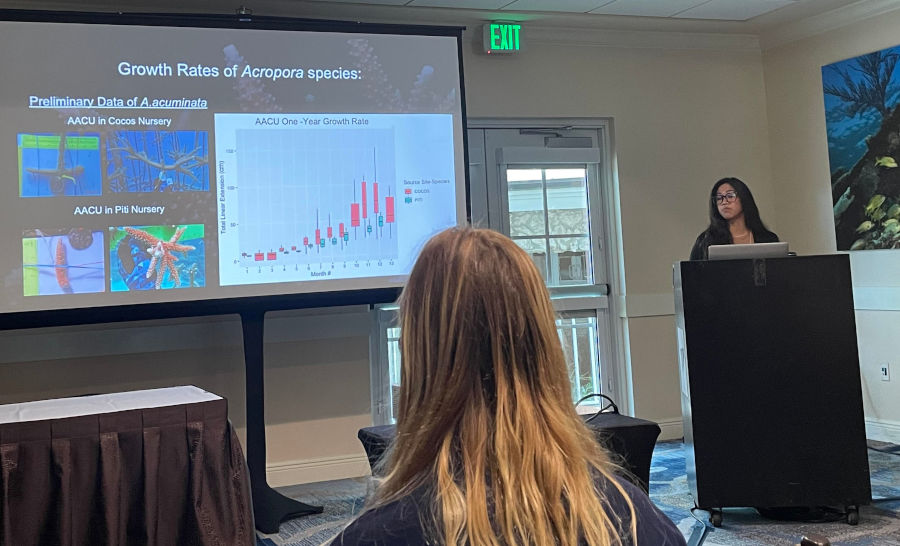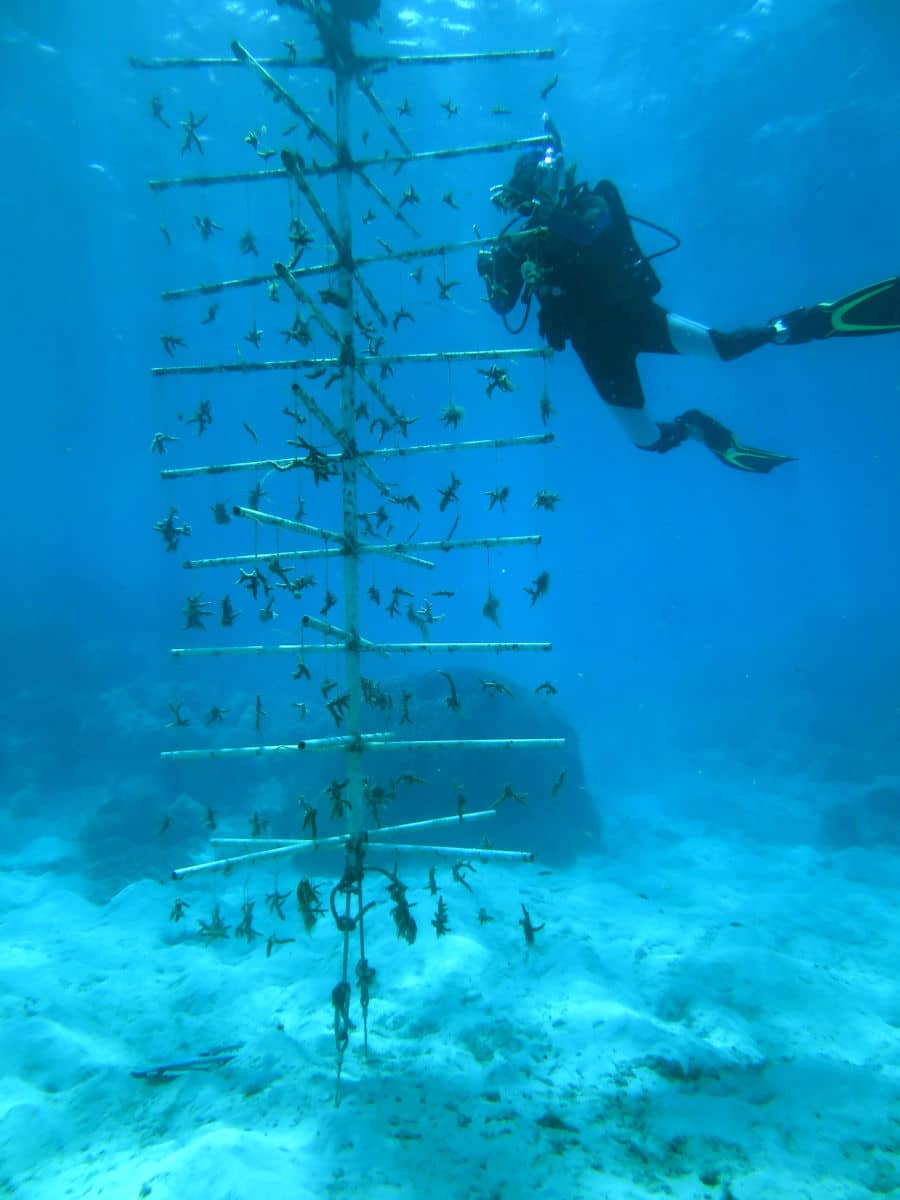UOG Marine Lab’s quest to restore Guam’s reefs discussed at international conference
UOG Marine Lab’s quest to restore Guam’s reefs discussed at international conference
UOG Marine Lab’s quest to restore Guam’s reefs discussed at international conference
10/14/2022

A team from the University of Guam Marine Laboratory gave presentations at an international conference about its efforts to help revive the island’s reefs through ocean nursery culturing and planting corals.
The UOG Marine Lab has been planting cultured corals onto reef flats in Piti and the Cocos Island lagoon while developing coral restoration practices.
The Marine Lab’s efforts through the years have been crucial in working to better understand the resilience of Guam’s reefs and to restore species impacted by bleaching. During bleaching, higher water temperatures, combined with sunlight, created heat stress on corals and can cause them to die.
Laurie Raymundo, director of the Marine Lab and professor of marine biology at UOG, was one of the presenters at the Reef Futures 2022 Conference in Key Largo, Florida from Sept. 26 to 30.

The Marine Lab made international headlines when previous research led by Raymundo found that more than one-third of all coral reefs in Guam were killed from 2013 to 2017 over the course of multiple bleaching events.
According to Raymundo, the next bleaching event will be a matter of when not if.
“The five-year event was unique. But fortunately, we have not bleached badly since then. But we feel it’s only a matter of time,” Raymundo said.
Some of the other members of the UOG Marine Lab team who presented at the Reef Futures conference include:
Ashley Castro, restoration technician, who presented her work on the growth rates of corals in the nursery. Castro noted there were clear differences between closely related species and between the corals growing in the Piti nursery compared with those in the Cocos Lagoon nursery.
“These results will be helpful in identifying ways to improve our culture approaches and species that are responding differently in our two nurseries,” Raymundo said.
Maria Andersen, also a restoration technician at the Marine Lab, gave a talk about how these species have fared after pruning and planting – how they are surviving and what is causing some mortality.
Marine Lab team members Renee Crisostomo and Carlos Tramonte also presented posters on their thesis projects.
The health of Guam’s reefs also has an impact on one of Guam’s main economic lifelines and job creators – tourism.
“We know from (Guam Visitors Bureau) reports that most visitors come because of our beautiful beaches and marine life. If we do not maintain them, we will probably lose our tourists.”
The good news is that the Marine Lab’s efforts overall – to give the Guam reefs a shot at survival – are gaining strides.
Overall, the cultured and transplanted and corals are all doing well, so far, Raymundo said.
The UOG Marine Laboratory was established as a research unit of UOG in 1970 and plays an important role in both national and regional marine research.
To learn more about the UOG Marine Lab, go to uog.edu/ml/.
